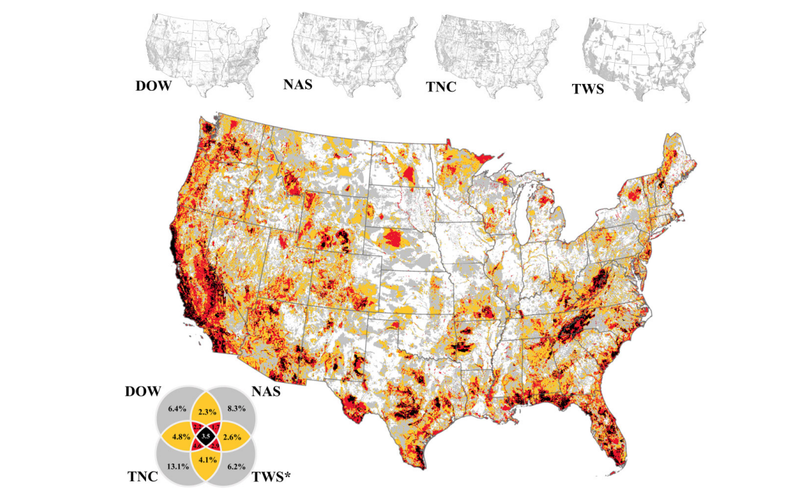

Deciding where to implement actions for biodiversity conservation remains challenging for many reasons, including the increase in maps aimed at prioritizing locations for conservation efforts. Although a growing numbers of maps can create the perception of uncertainty and competing science, a shared set of principles underlie many mapping initiatives. We overlaid the priority areas identified by a subset of maps to assess the extent to which they agree. The comparison suggests that when maps are used without understanding their origin, confusion seems justified: The union of all maps covers 73% of the contiguous United States, whereas the intersection of all maps is at least 3.5%. Our findings support the need to place a strong focus on the principles and premises underpinning the maps and the end users’ intentions. We recommend developing a science-based guidance to aid scientists, policymakers, and managers in selecting and applying maps for supporting on-the-ground decisions addressing biodiversity loss and its interconnected crises.